Hi Everyone! We are team Shingaporu and for this project, we are working on a landscape digital painting as part of the celebration for Singapore and Japan to commemorate the 50th anniversary which is happening right here right now.
Claim
Commemorating the 50th anniversary of Japan-Singapore diplomatic relationship. That is the reason why we combine Japanese traditional aspect (folded screen) with modern landscape of Singapore. We feel that not many people know about this ongoing special celebration, hence this visual response might serve more than just a display but an informative artwork.
Artist Statement:
2016 celebrates the 50th anniversary of Singapore’s diplomatic relationship with Japan since 1966, a year after Singapore gained independence. Singapore’s history with Japan goes way back to the Japanese Occupation during World War II. Fortunately, our relationship with Japan has improved over the years and is still ever growing. This artwork is a response to this strong relationship as well as to celebrate and increase the appreciation for the ongoing celebration for the 50th Anniversary of Singapore-Japan diplomatic relations.
Shingaporu consists of the modern landscape of Singapore and Japan. The seasons are a prominent subject matter in traditional japanese screen paintings and they represent a cycle and the passing of time. The images go back and forth to signify the relationship between similar features in both the Singapore and Japanese landscapes. This artwork embodies four aspects of time – day and night, past and present. The foregrounds of each landscape to represent the past, and the backgrounds to represent the present. The “foreground of the past” consists of torn old paper texture, each country’s iconic flower and one of the oldest iconic place. Then, as we look far into the present and the future, we see the background of today’s cityscape. This way, we are able to keep traditional taste of Japanese screen painting despite using modern medium.
Shingaporu is made in a way that when viewers move in a direction that is parallel to the artwork, they would be able to experience a change in the landscape: from Japan to Singapore, and vice versa. There would also be a moment where two landscapes intersect and exist on the same plane side by side, which symbolizes the close bond between the two countries.
As we learn to appreciate both the city and nature, we must also come to understand the rich history of our countries. While doing so, we will then be able to celebrate these wonderful events and look forward to the future.
Group Members: Darren Ho Jian Hunt, Feliciana, Sarah and Isabella Tong
Title of artwork: Shingaporu
Size: 6 A4 and folded to make an anamorphic art style
Medium: Digital Painting plus filter to make it look like a Screen Painting
Job Allocation:
Darren Ho Jian Hunt – Digital Artist for Singapore Landscape painting
Feliciana: Concept Artist plus Final Touchup
Isabella Tong: Digital Artist for Japan Landscape painting
Sarah: Researcher, Writer and Planner
Research and Reference: Four Seasons With Sun and Moon in National Museum Of Singapore
Visual Analysis
- Both screens have subject matters of nature and landscape: trees in different seasons, hills and valleys ‘framing’ the trees, grass, flowers.
- Golden frame.
- Each screen is divided into 2 ‘scenery’. First image: winter (L) with its white snow on the leaves, autumn (R) with red falling leaves, and both are during the day because the tone is bright. Second image: Summer (L) with barren land and withered plant, spring (R) with baby plants, blooming flowers and grass, and both are during the night because there is circular moon at the top side of the painting
Visual Response Idea
- The digital painting of Singapore modern landscape.
- Might include famous landmarks, buildings and places such as Merlion, Marina Bay Sands, Singapore Flyer, Buddha Tooth Relic Temple, Esplanade Theatre and many more.
- Nature’s element presented in the painting: rain forest trees, orchids, or other plants which are present in Singapore.
- The painting can be folded, just like Japanese screen
What else is being done for the celebrations
http://www.sg.emb-japan.go.jp/events_SJ50PA_Schedule.htm
- There are several events being held in Singapore throughout the entire year to celebrate this joyous event. Events that include food, Artwork, Travel Fair etc. Follow the link to get more details on the different events.
Are all the celebrations about let’s forget the past and focus on the present and the future
http://www.cnbc.com/2015/12/30/sg30-sequel-singapore-japan-to-launch-sj50-to-celebrate-bilateral-ties.html
- From the article, we read that,
“During World War II, when Japan occupied Singapore, thousands of Singaporeans were killed for being “anti-Japanese” or for being “Chinese sympathizers.”
But there has been a sea change in relations since the 1945 end of the occupation. The countries launched diplomatic relations in 1966 – a year after Singapore gained its independence – and in the 1970s Japan became Singapore’s largest foreign investor and trading partner. The Lion City was also the first country to sign a free-trade agreement with Japan in 2002.”
To conclude, we can tell that the relationship between Singapore and Japan is ever growing and are going stronger as years goes by.
Why is the painting folded into anamorphic style and its function
- Our artwork is such that when the viewer moves in a direction that is parallel to the artwork, they would be able to experience a change in the landscape (from singapore to japan, and vice versa). While moving, there would also be a moment where the two landscapes intersect and exist on the same plane. This symbolises the relationship between the two countries. Furthermore, the artwork when viewed from the front can be seen as a combined landscape of singapore and japan.
- Since japanese screen paintings usually come in pairs, we played along with that idea. Our artwork can be seen as two separate screens but they exists as one single screen.
Why this medium and how we see the co-releation
- In relation to our selected artefact, we decided to paint a landscape of the world we live in now. While people used to be surrounded by nature in the past, we now live in a world where we are surrounded by skyscrapers. We intended to show how our landscapes have changed from past in this artwork. The seasons represents a cycle and the passing of time. The seasons has been used to portray the idea of time in our chosen artefact. In our artwork, we plan to do so with our choice of medium while keeping some elements of the original artefact (such as the gold borders, trees and flowers), since the digital medium had not existed in the past.
What is it’s size and purpose of the painting
- The artwork will be printed in 6 A4 styles and pasted plus folded in a way to make it into a larger size printing to bring out the sort of impact to the audience. The printing can either be a banner to mark the Anniversary or can be used as a brochure for people to realise the existence of the relationship.
Process
Sketches
Singapore Landscape Painting
Added on brown paper filter
Inserting it on A3 Template and Added a Font Title
Final
Singapore Landscape Japan Landscape
Reflection:
Firstly, this project help me to realise the importance of living in harmony and also to move forward from the past to create a brighter future. As seen from the history of Singapore, Singapore was once conquered and killed for being “Anti-Japanese” but this was all happening in the past and we humans should move on from there and start appreciating the present. Even through our landscape painting, we can see the cycle and the passing of time for nature towards a modernise buildings and infrastructure.
Secondly, I learnt about the importance of intercultural communication. There are several factors which are important such as the symbols, beliefs, attitudes, values between both the countries. I believed the importance of studying other countries cultures, languages and also help to develop a sense of mindfulness about one another.
Thirdly, is the teamwork and cooperations from my teammates. At first we have a pretty hard time trying to decide on the kind of prototype that are able to convey a deeper message to the audience, but is only through the trust we have from one another that we are able to decide on one specific artwork and focus on it. I am grateful for my team to be able to work things out in such a fast manner and the amount of time and hard work we spent on making our prototype even better.
In conclusion, theres a famous quote that i learnt which says “If you want to make peace with your enemy, you have to work with your enemy. Then he becomes your partner” by Nelson Mandela. This clearly stresses the importance of friendship and how precious it is to make more friends then enemies.
Presentation slides in PDF format
AH Last Assignment.pptx.compressed
Blibiography:
- Crawcour, Sydney. “The Journal of Japanese Studies.” The Journal of Japanese Studies 27.1 (2001): 194-97. Web. 3 Apr. 2016.
- “Momoyama Period (1573–1615) | Essay | Heilbrunn Timeline Of Art History | The Metropolitan Museum Of Art”. 2002. The Met’S Heilbrunn Timeline Of Art History. https://www.metmuseum.org/toah/hd/momo/hd_momo.htm.
- “New ‘Star Wars’ Characters Rendered In Style Of Japanese Rimpa Art School | The Japan Times”. 2015. The Japan Times. http://www.japantimes.co.jp/culture/2015/11/30/entertainment-news/new-star-wars-characters-rendered-in-style-of-japanese-rimpa-art-school/#.VvIMOBJ96Ho.
- “Partition And Screen Paintings (Shoheiga)”. 2016. Web-Japan.Org. Accessed March 21. http://web-japan.org/museum/byobu/byobu.html.
- “Screen / Painting”. 1965. British Museum. http://www.britishmuseum.org/research/collection_online/collection_object_details.aspx?objectId=782965&partId=1&searchText=sun+and+moon+four+seasons&images=true&page=1http://www.britishmuseum.org/research/collection_online/collection_object_details.aspx?objectId=782965&partId=1&searchText=sun+and+moon+four+seasons&images=true&page=1.
- http://www.cnbc.com/2015/12/30/sg30-sequel-singapore-japan-to-launch-sj50-to-celebrate-bilateral-ties.html
- http://www.sg.emb-japan.go.jp/events_SJ50PA_Schedule.htm


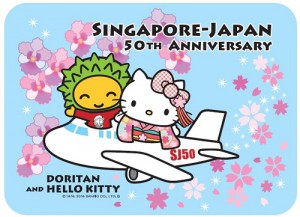
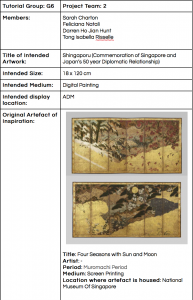
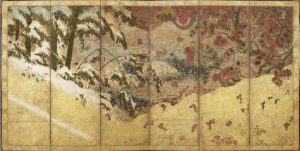
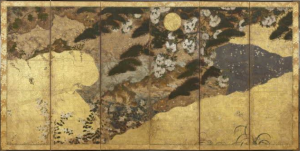
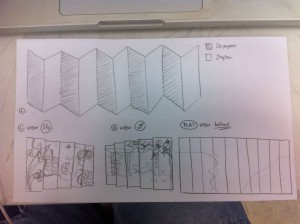




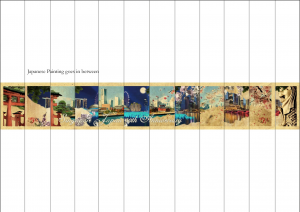
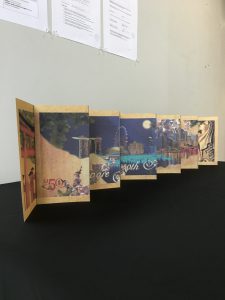
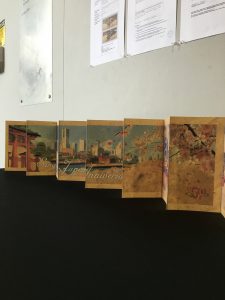
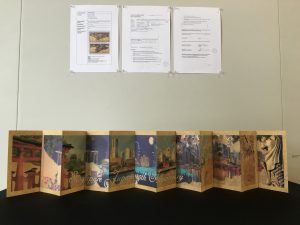
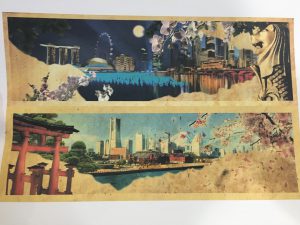
1 comment for “Team Shingaporu Final Project”